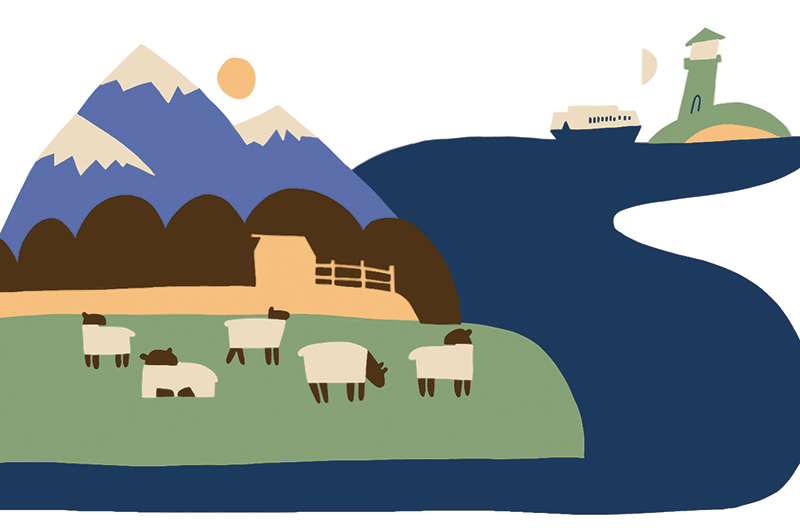What do Vineyarders know, do, or say that visitors might not? Do you feel like you could pull a local out of a lineup of tourists? Live on Martha’s Vineyard long enough and you might pick up some strong opinions about what makes Islanders unique. And for every other island out there, we imagine there are plenty of locals with some equally strong opinions. So, we decided to call them up and ask them about the island they call home.
The Island: South Island, New Zealand
The Islander: Cathie Bell
The Story in Brief: Travel over 9,000 miles from Martha’s Vineyard and you’ll reach New Zealand’s South Island, which is 600 times the size of our tiny Island. It’s ridged with snow-capped mountains, lined with subtropical beaches, and populated by animals such as the yellow-eyed penguin and the skink. For Cathie Bell, a farmer and lifelong New Zealander, it’s home.
New Zealand is made up of two main islands: North Island and South Island – or Te Ika-a-Māui and Te Waipounamu, respectively, in the Māori language – along with over 700 smaller islands. Bell and her husband, Sam, have been running Benlea, their 3,000-acre sheep, cattle, and crop farm in a remote section of the South Island, for more than thirty years. They have about 6,000 sheep, 150 cows, and 250 cattle on the property.
Because of the economics of remote island life, New Zealand farms export over 90 percent of their produce each year, Bell said. “We’re very dependent on the U.S. dollar.”
The Visitors: The Bells offer tours of their farm. Tourists are easy to pick out because of their noticeable extroversion. “New Zealand is a friendly place, but they’re possibly keener to have a chat,” she said. The look sets visitors apart as well. Local young people are often barefoot or wearing what they call jandals – what we call flip-flops. Tourists tend to be in hiking boots or sneakers.
Visitors are delighted by their farm animals too. “They love being able to touch a sheep and actually feed a sheep,” Bell said. And they enjoy the “fact that they eat salt and vinegar chips for their snack.” The sheep, that is, not the visitors.
The Local Attitude: This remote geography breeds a necessary can-do attitude. Locals “have what we call a number-eight-wire mentality,” Bell said. This means that they are flexible and can fix many things, just like the thick, bendable number-eight wire can. Case in point: the farm’s diesel burner was recently on the fritz, but Bell wasn’t worried. “I just superglued the bit back on and away she went.”





